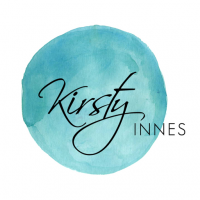If you’ve been practicing at yoga studios for any length of time, you might have noticed a recent trend that’s gently sweeping over studio timetables… Yin Yoga and Restorative Yoga. So… what are they all about? How are they different to ‘normal’ yoga? Are Yin Yoga and Restorative Yoga essentially the same thing? Well no, and yes. Let me explain…
The term “yin” comes from the Taoist tradition. A yin activity is based on finding stillness and cooling the body. The opposite of yin is yang. Yang relates to movement, often repetitive movement, creating heat in the body. And, the theory goes, we need both to come into balance in order to stay in optimum condition. Yang activities include running, cycling and some vigorous forms of yoga, such as ashtanga vinyasa and Bikram yoga (the hot one!). If we do ONLY yang activities over a prolonged period, our body can suffer fatigue and burnout.
A yin style of yoga is practiced without much exertion, usually sitting or lying on the floor. There are no planks, no warriors, no core work. No dynamic sun salutations or standing poses. In Yin, the pace is slow. Another main difference between a Yin and Yang yoga practice is that Yin postures are done with the muscles relaxed and held for a long time.
Restorative Yoga is a very slow-paced style of yoga involving the use of props (sometimes lots of props) to allow the body to feel totally supported so that the physical, mental and visceral bodies can begin to relax and release. Restorative yoga is often prescribed to students who are injured, stressed or ill and who need a very gentle practice to regain their strength. In theory, this sounds very yin compared to many yang Hatha yoga practices that include strong dynamic movements to energising tunes. So, in many ways, restorative yoga is
yin but is it, Yin Yoga?
Yin Yoga, as a style of yoga, was popularised (and, in a sense, branded) by Paul Grilley and Sarah Powers, and is very different from Restorative Yoga. Yin Yoga encompasses long held, static stresses of the deep connective tissues, allowing them to be remodelled. It may include props and it does include long holds and mindfully reducing stress but it is not intended to renew ailing bodies in the way that Restorative Yoga does. In fact, Yin Yoga can still involve a lot of hard work. Like in Restorative, Yin Yoga also involves long holds of relaxed muscles, but the focus is on effectuating long, passive stretches on joints and ligaments. It is specifically
designed to access the meridians flowing through the body’s deep connective tissues.
Yoga teacher, Annette Knopp, gives a great example of how the same pose can be approached differently in the different styles of yoga. Let’s take the example of a Seated Forward Bend, or Pachimottanasana. In more Yang Yoga styles, you activate your leg muscles, you engage bhandas and the muscles along the spine to lengthen your torso, and then tilt forward from your hip. In the same pose in Restorative Yoga we would place big bolsters and pillows under the torso, so we would lean forward, but resting and supported by the bolsters.
In Yin Yoga we also lean over our extended legs, but with the spine round and the muscles of spine, neck and head relaxed. We don’t stretch and engage muscles or energetic locks to get deeper into the pose, nor would we support our torso up like in Restorative Yoga. While initially appearing easy, like lying around Restorative Yoga may actually be seen as an advanced form of
yoga, more akin to meditation, where we have the time to observe sensations, our breath, our emotions and mind, and where we may welcome all of these experiences. This is not necessarily easy at all. Through this practice, we may come face to face with aspects of ourselves which are not comfortable to be with. In more active Yoga we may be so busy with our we don’t give ourselves the time and space to notice these deeper levels. (ref: Neal Ghoshal)
It is sometimes questioned whether we need as many props as we do in a Restorative Yoga practice. The answer is yes. Whatever posture we practice, whether it’s a forward bend or backward bend, inversion or supine, we set ourselves up so that every joint in our body is supported and we can allow gravity itself to work its magic and release held tension. Every posture should feel sustainable and incredibly comfortable. New Zealand-based Yoga teacher, Neal Ghoshal, suggests that without the distraction of an uncomfortable body, we have the freedom to soften and release deeply, to ease through layers of tension, into profound relaxation, quietness and stillness. Why stillness? The simple answer is to quote a much-loved teacher who now resides in the USA – Baba Hari Das: When the mind is silent, the heart speaks. The language of the heart is love, compassion and peace.
The more we can anchor into this ground of silence (and Restorative Yoga gives us the tools for this), the more we may respond to whatever happens in our life from our True Nature, which is love, compassion, peace and kindness.
Kirsty Innes offers regular Restorative Yoga Afternoon Retreats and customised Private Sessions. She is also co-facilitating a wonderful Mindfulness-Based Restorative Yoga Teacher Training in February 2019 on the beautiful Sunshine Coast, Australia.
References and inspiration:
Yin Yoga: Outline of a quiet practice by Paul Grilley
Relax and Renew by Judith Hanson Lasater
Inspiration from teachings and writings of Donna Farhi, Neal Ghoshal and Sarah Powers.
